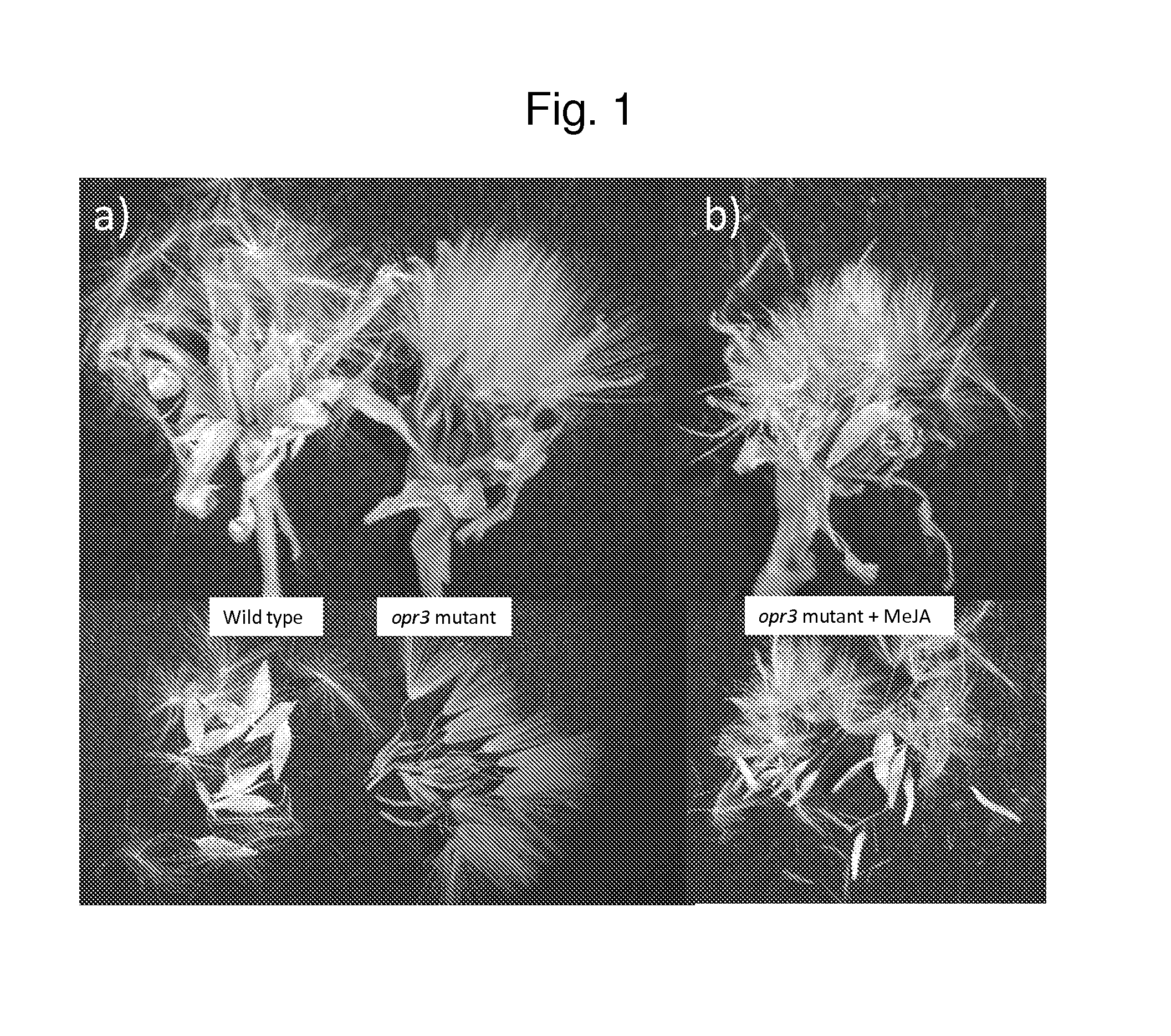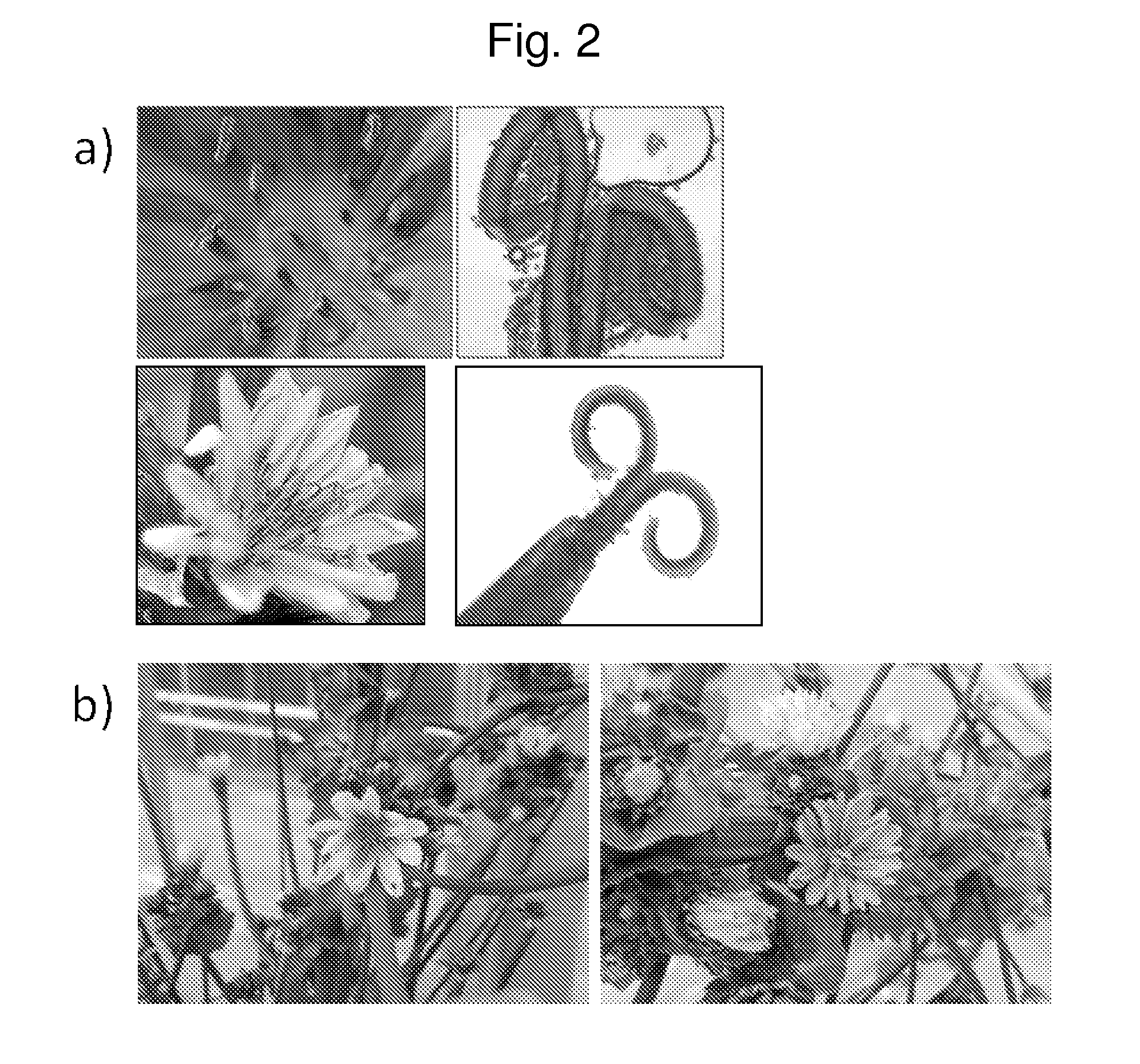Reversible genic male sterility in compositae
a genus and composita technology, applied in the field of compositae plants, can solve the problems that arabidopsis /i>is not by definition valid for other plant species, and achieve the effect of efficient and convenient production of hybrid seeds
- Summary
- Abstract
- Description
- Claims
- Application Information
AI Technical Summary
Benefits of technology
Problems solved by technology
Method used
Image
Examples
example 1
Reversible Male Sterility in Lettuce
[0164]A mutant lettuce plant (Lactuca sativa), having a mutated version of the OPR3 gene, was obtained by means of chemical mutagenesis and subsequent TILLING screening of about 3,000 M2 plants. DNA sequencing revealed the presence of a C to T mutation (CAA to TAA) in one M2 plant, leading at the protein level to the conversion of a Glutamine to a premature stop codon at position 107, and hence to the presumed expression of a truncated version of the OPR3 protein in this mutant plant.
[0165]Phenotypically this mutant lettuce plant was indistinguishable from wild type lettuce plants, when the mutation was present in a heterozygous state. However, when the plant was self-pollinated and allowed to produce seeds, the homozygous mutant plants of the next generation showed complete male sterility. The few pollen grains that developed in such homozygous mutants were not functional. The homozygous mutant plants did not set seed when allowed to self-pollina...
example 2
Transfer of the Reversible Male Sterility Trait to Another Lettuce Plant
[0168]Lettuce plants of the invention (of the deposit, NCIMB 42060) were crossed with wild type (WT) lettuce plants, which do not carry the trait of the invention. The resulting F1 plants from this cross had the same phenotype as the WT plant, i.e. they displayed normal fertility. Nevertheless, the presence of the trait of the invention in a heterozygous state could be detected in all F1 plants by means of a molecular marker. The Single Nucleotide Polymorphism (SNP) that can be used for this purpose is presented as SEQ ID No. 1. This molecular marker can be used to identify the presence of the genetic determinant that underlies the trait of the invention in lettuce plants grown from seeds as deposited under NCIMB number 42060.
[0169]In the F2 generation the trait of the invention segregated in a manner that corresponds with a monogenic recessive inheritance. The trait of the invention could be introduced into a w...
example 3
Reversible Male Sterility in Endive
[0172]A mutant endive plant (Cichorium endivia), having a mutated version of the OPR3 gene, was obtained by means of chemical mutagenesis and subsequent TILLING screening of about 10,000 M2 plants. DNA sequencing revealed the presence of a C to A mutation in exon 2 (CCG to CAG) in one M2 plant, leading at the protein level to a Proline to Glutamine amino acid change at position 76.
[0173]Phenotypically this mutant endive plant was indistinguishable from wild type endive plants, when the mutation was present in a heterozygous state. However, when the plant was self-pollinated and allowed to produce seeds, the homozygous mutant plants of the next generation showed male sterility, along with a pale flower colour (almost white, compared to the blue colour of wild type flowers of this endive line). The pollen grains that developed in such homozygous mutants were unable to germinate and therefore dysfunctional. When used as the female parent in a cross, t...
PUM
| Property | Measurement | Unit |
|---|---|---|
| Sterile | aaaaa | aaaaa |
Abstract
Description
Claims
Application Information
 Login to View More
Login to View More - R&D
- Intellectual Property
- Life Sciences
- Materials
- Tech Scout
- Unparalleled Data Quality
- Higher Quality Content
- 60% Fewer Hallucinations
Browse by: Latest US Patents, China's latest patents, Technical Efficacy Thesaurus, Application Domain, Technology Topic, Popular Technical Reports.
© 2025 PatSnap. All rights reserved.Legal|Privacy policy|Modern Slavery Act Transparency Statement|Sitemap|About US| Contact US: help@patsnap.com


